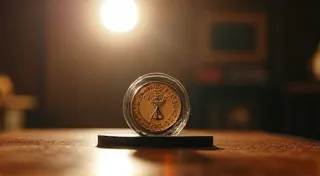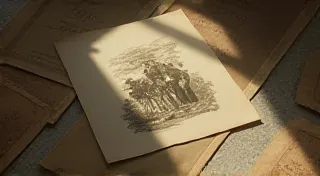Chromatic Whispers: Deciphering the Color Palette of Nostalgia in View-Master Reels
There’s a peculiar magic held within those small, circular cardboard reels, a magic that transcends mere images and transports you to another era. A View-Master reel isn’t just a collection of photographs; it's a carefully curated window into a specific time, meticulously framed by a specific palette of colors. It's a testament to an era when color itself was a powerful tool, wielded with artistry and intention. For those of us drawn to collecting these miniature portals to the past, understanding how color influenced the View-Master experience adds another layer of appreciation, transforming simple nostalgia into a richer, more resonant experience.
My own fascination began with my grandfather’s collection. Tucked away in a dusty attic trunk, they were a revelation. The vibrant reds of the Grand Canyon, the soft blues of the Swiss Alps, the muted sepia tones of historical landmarks – each reel offered a tiny world brimming with detail. He’s gone now, but those View-Master reels remain, tangible links to his stories, his laughter, and the particular hue of his memory. It's not simply about the destinations; it's about the *feeling* those colors evoked, a feeling deeply imprinted within my own understanding of the world.
The Evolution of Color in a Black and White World
To truly understand the significance of color in View-Master reels, we need to appreciate the context of their creation. The View-Master was introduced in 1933, a pivotal moment in both technology and aesthetics. While photography itself was already established, widespread access to color photography was still nascent. Kodachrome, the first commercially successful color film, wouldn’t become readily available until 1935. Prior to this, most photographs were rendered in stark black and white, or painstakingly hand-tinted. This scarcity of accessible color meant that when color *did* appear, it carried an almost mythical significance.
Early View-Master reels were predominantly black and white, often with a reddish-brown tint achieved through the dye-printing process. The impact wasn’t about replicating reality; it was about conveying a sense of exoticism and wonder. The choice of red, in particular, likely played a role – a color associated with excitement, adventure, and the unfamiliar. As color photography became more accessible, the transition to full-color reels was gradual, dictated by technological advancements and evolving consumer tastes. The intricate engineering behind these machines and their reels is truly fascinating - you might enjoy learning more about the algorithm of awe that drove their creation.
The initial foray into color wasn't necessarily about vibrant, saturated hues. Early color processes often resulted in slightly muted, almost pastel tones. The "Kodachrome" reels, while a significant upgrade, still possess a characteristic softness that differs from the bolder colors of later generations. This subtlety contributes to their charm and historical value. Collectors often seek out these early color reels not only for their rarity but also for the unique aesthetic they embody.
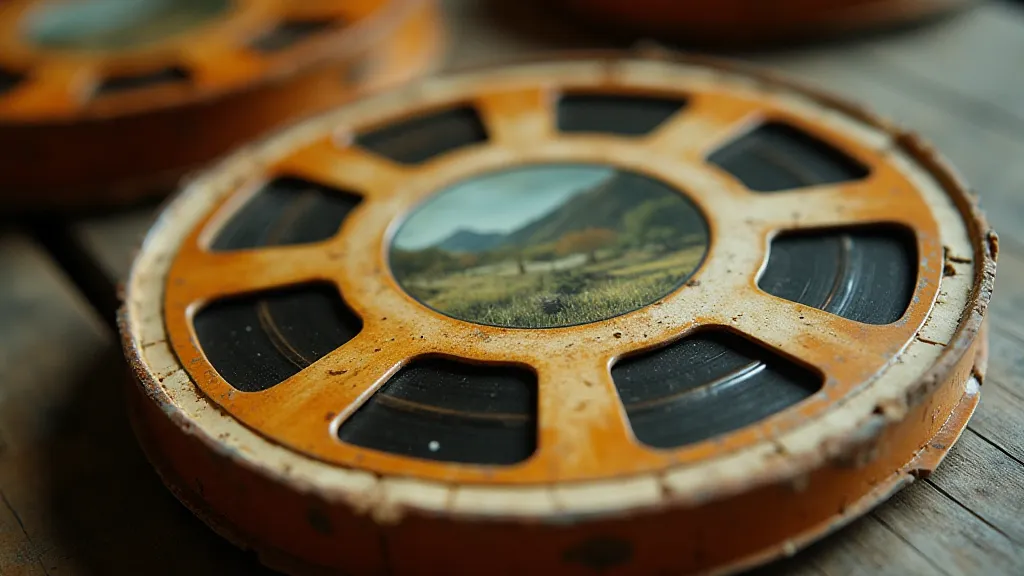
Decoding the Color Codes: A Language of Emotion
The colors chosen for View-Master reels weren't random. They were carefully selected to create a specific emotional response. Consider the prevalence of blues and greens in reels depicting natural landscapes. Blue represents tranquility, serenity, and vastness – perfectly suited to evoke the feeling of gazing upon a majestic mountain range or a shimmering ocean. Green embodies life, growth, and harmony, reinforcing the sense of natural beauty. The clever use of complementary colors, like orange and blue, created visual interest and dynamism, guiding the viewer's eye through the miniature scene.
The color palettes also reflected broader trends in design and fashion. The 1950s, for example, were characterized by a softer, more optimistic aesthetic, reflected in the prevalence of pastel shades like pink, turquoise, and lavender in many reels. The use of these colors wasn’t just about looking pretty; it was about conveying a sense of hope and prosperity in the post-war era. Later reels, particularly those from the 1960s and 70s, embraced bolder, more psychedelic hues, mirroring the changing cultural landscape. The color choices served as a visual shorthand, immediately communicating the era and the intended mood. Sometimes, those early visions never made it to the market - tales of lost reels and unreleased storylines add another layer of mystery to the hobby.
Restoration and Preservation: Respecting the Original Palette
Preserving these tiny treasures requires a delicate approach. Many reels have suffered from fading, discoloration, or damage over the years. While restoration can be tempting, it’s crucial to be mindful of the original color palette. Attempting to "correct" fading or discoloration can inadvertently alter the reel's historical integrity and diminish its value. It's always best to consult with experienced collectors or professionals before attempting any restoration work.
Gentle cleaning with a soft brush and archival-quality materials can often remove surface dust and grime, enhancing the vibrancy of the colors. Proper storage, away from direct sunlight and moisture, is essential to prevent further deterioration. Understanding the subtleties of the original color palette allows collectors to make informed decisions about preservation, ensuring that these miniature windows to the past continue to enchant generations to come.
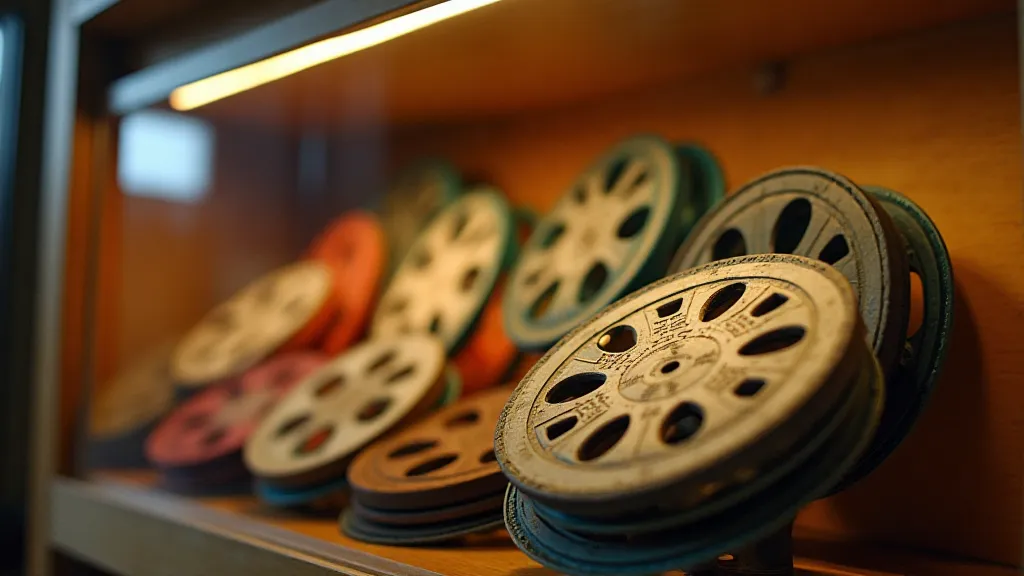
Beyond the Image: Craftsmanship and Detail
The magic of View-Master reels isn't just about the colors or the images themselves. It’s also about the meticulous craftsmanship that went into their production. Each reel is a testament to the skill and dedication of the artisans who created them. The precise registration of the images, the evenness of the coloring, the quality of the cardboard – all contribute to the overall viewing experience. Examining these details closely reveals a level of care and attention that is often overlooked in today's mass-produced world.
The texture of the cardboard, the subtle variations in color density, the faint scent of aged paper – these sensory details add another layer of richness to the experience. Holding a vintage View-Master reel in your hand is akin to holding a piece of history, a tangible link to a bygone era. It’s a reminder of a time when things were made with care, intention, and a deep appreciation for beauty.
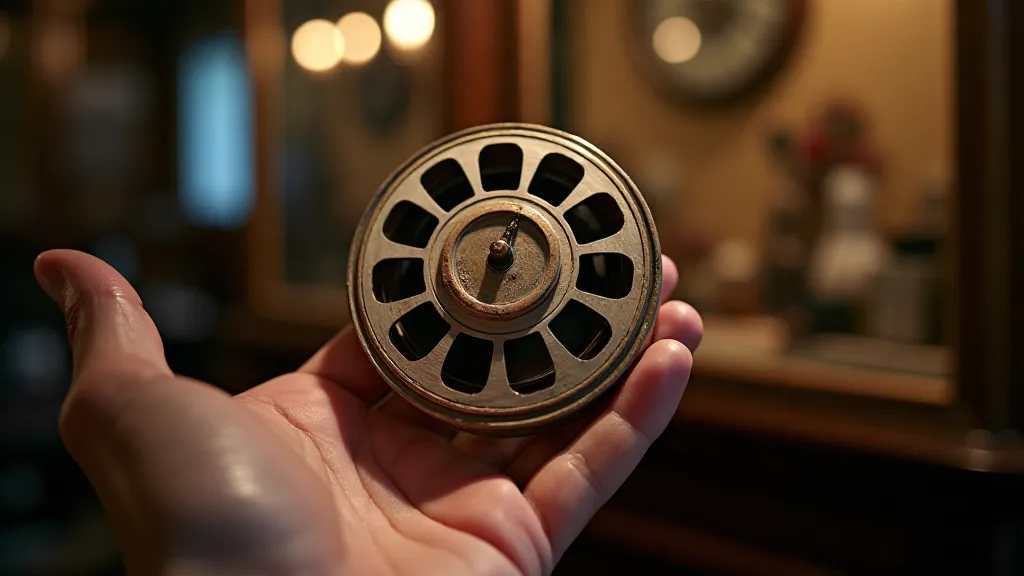
The Fleeting Nature of View-Master Story Reels
Many collectors are captivated by the narrative View-Master reels - those designed to tell a story. These reels, often presented as extended narratives, hold a unique allure, representing a bygone era of immersive storytelling long before the advent of video games and streaming services. However, the creation of these story reels was a delicate balance, requiring not only engaging narratives but also careful consideration of image selection and sequencing to maintain the flow of the story. Many of these original plots and visions, while brilliant in concept, unfortunately never saw the light of day, lost to time or deemed unsuitable for release. Imagine the potential of those ephemeral kingdoms that existed only in the minds of creators.
The Broader Cultural Context
The popularity of View-Master reels wasn's merely a reflection of technological advancement; it was deeply intertwined with the evolving social and cultural landscape of mid-20th century America. The post-war boom brought increased prosperity and disposable income, allowing families to invest in leisure activities and novel forms of entertainment. The fascination with travel and exploration, fueled by magazines and newsreels, found a perfect outlet in View-Master reels, offering glimpses of exotic locales and faraway lands. Moreover, the reels tapped into a broader nostalgia for simpler times, offering a comforting escape from the complexities of a rapidly changing world.
A Lasting Legacy of Chromatic Nostalgia
Collecting View-Master reels is more than just accumulating objects; it’s about preserving memories, celebrating artistry, and connecting with a shared cultural heritage. By understanding the significance of color in these miniature worlds, we deepen our appreciation for their beauty and historical value. They are chromatic whispers, faint echoes of a past filled with wonder, adventure, and a unique perspective on the world – a world brought to life through the artistry of color.



